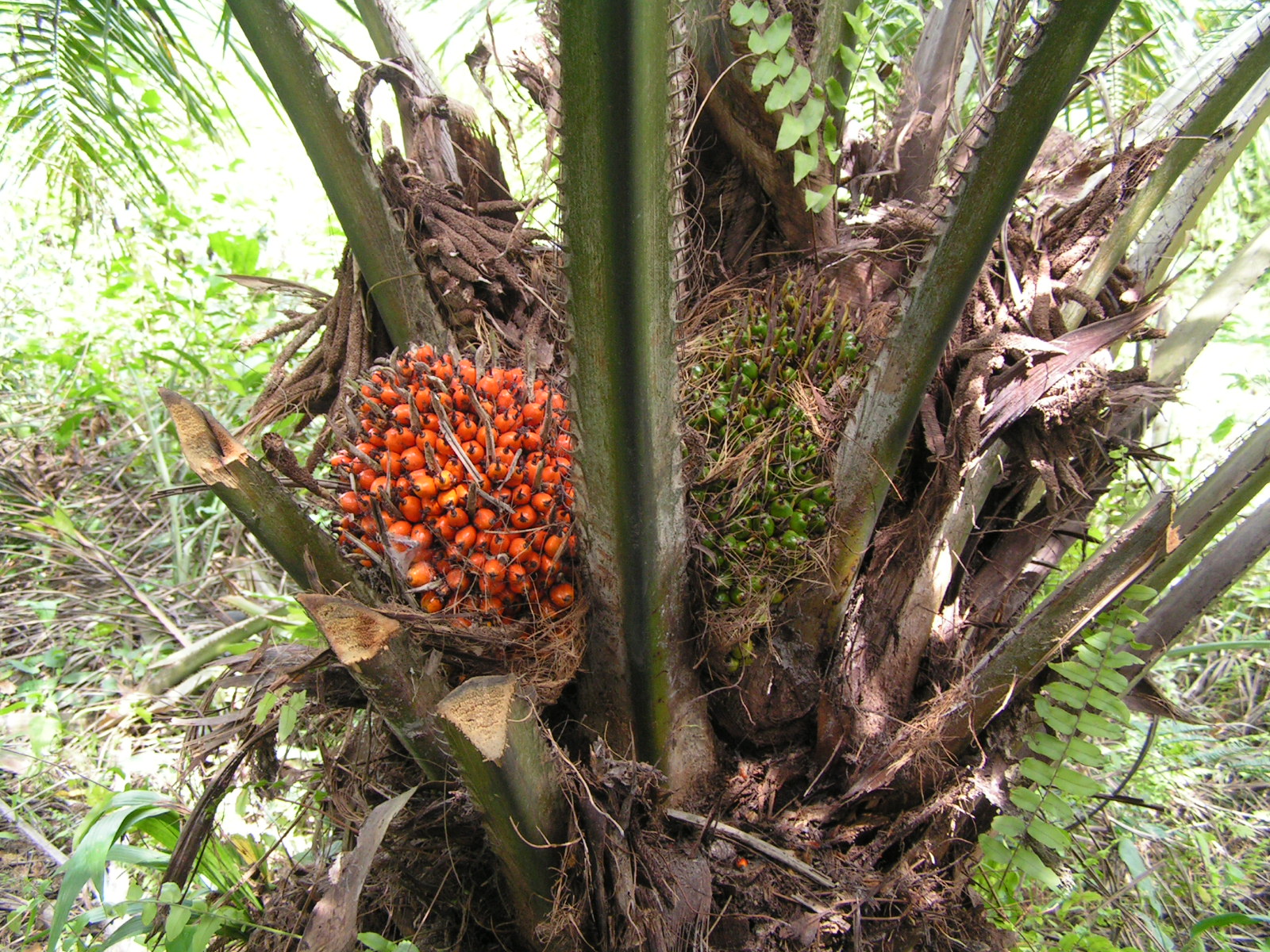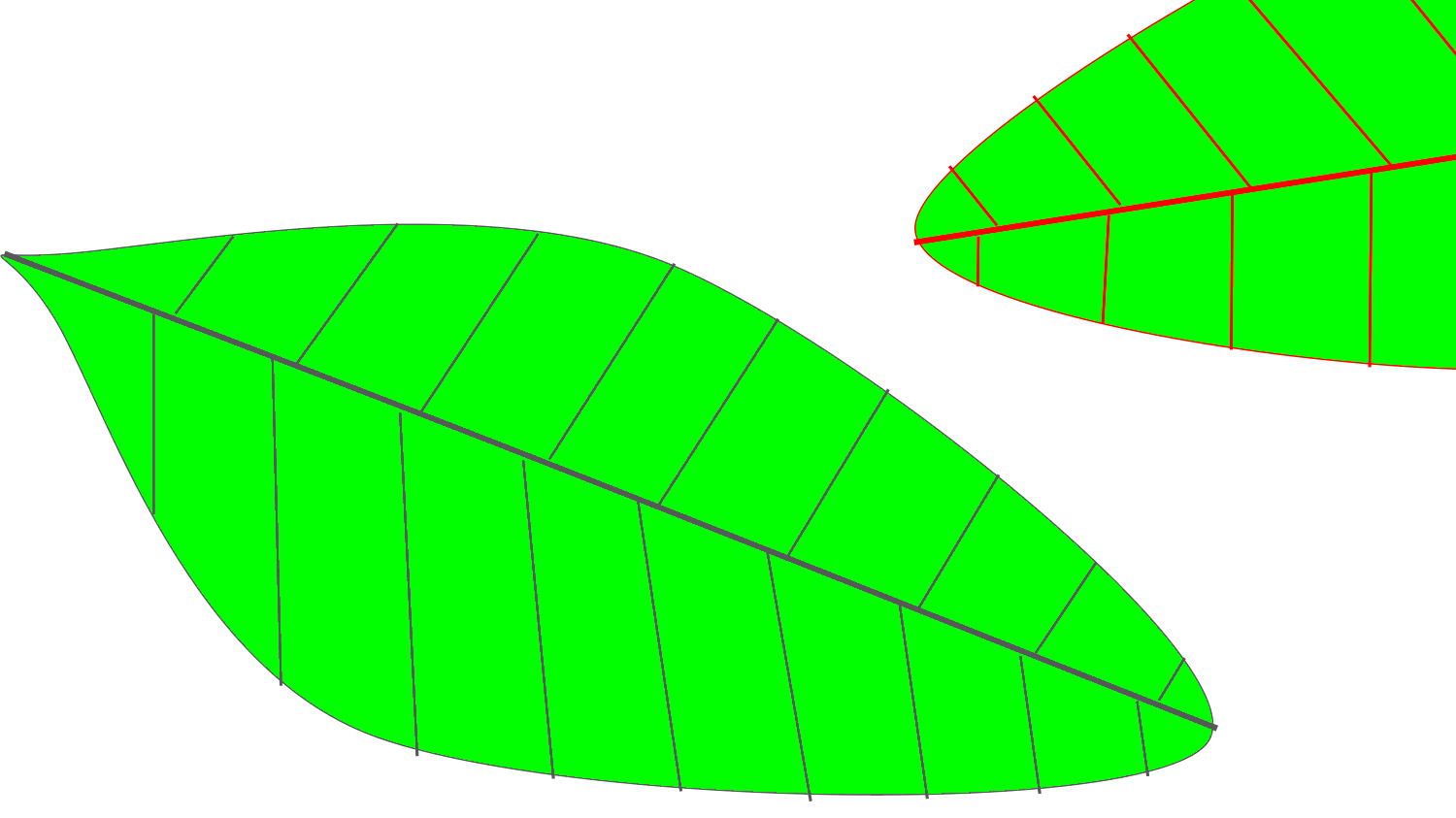|
Cadang-cadang
Cadang-cadang is a disease caused by ''Coconut cadang-cadang viroid'' (CCCVd), a lethal viroid of coconut (''Cocos nucifera''), African oil palm (''Elaeis guineensis''), anahaw (''Saribus rotundifolius''), and buri (''Corypha utan'') palms. The name cadang-cadang comes from the word that means dying in Bicol. It was originally reported on San Miguel Island in the Philippines in 1927/1928. "By 1962, all but 100 of 250,000 palms on this island had died from the disease," indicating an epidemic. Every year one million coconut palms are killed by CCCVd and over 30 million coconut palms have been killed since Cadang-cadang was discovered. CCCVd directly affects the production of copra, a raw material for coconut oil and animal feed. Total losses of about 30 million palms and annual yield losses of about 22,000 tons of copra have been attributed to Cadang-cadang disease in the Philippines. Characteristics Viroids are small, single-stranded RNA molecules, ranging from 246 to 375 n ... [...More Info...] [...Related Items...] OR: [Wikipedia] [Google] [Baidu] |
Viroid
Viroids are small single-stranded, circular RNAs that are infectious pathogens. Unlike viruses, they have no protein coating. All known viroids are inhabitants of angiosperms (flowering plants), and most cause diseases, whose respective economic importance to humans varies widely. The first discoveries of viroids in the 1970s triggered the historically third major extension of the biosphere—to include smaller lifelike entities —after the discoveries in 1675 by Antonie van Leeuwenhoek (of the "subvisible" microorganisms) and in 1892–1898 by Dmitri Iosifovich Ivanovsky and Martinus Beijerinck (of the "submicroscopic" viruses). The unique properties of viroids have been recognized by the International Committee on Taxonomy of Viruses, in creating a new order of subviral agents. The first recognized viroid, the pathogenic agent of the potato spindle tuber disease, was discovered, initially molecularly characterized, and named by Theodor Otto Diener, plant pathologist a ... [...More Info...] [...Related Items...] OR: [Wikipedia] [Google] [Baidu] |
Elaeis Guineensis
''Elaeis guineensis'' is a species of palm commonly just called oil palm but also sometimes African oil palm or macaw-fat. It is the principal source of palm oil. It is native to west and southwest Africa, specifically the area between Angola and the Gambia; the species name, ''guineensis'', refers to the name for the area, Guinea, and not the modern country now bearing that name. The species is also now naturalised in Madagascar, Sri Lanka, Malaysia, Indonesia, Central America, Cambodia, the West Indies, and several islands in the Indian and Pacific Oceans. The closely related American oil palm ''Elaeis oleifera'' and a more distantly related palm, ''Attalea maripa'', are also used to produce palm oil. ''E. guineensis'' was domesticated in West Africa along the south-facing Atlantic coast. There is insufficient documentation and insufficient research to make any guesses as to when this occurred. Human use of oil palms may date as far back as 5,000 years in Egypt; in the late ... [...More Info...] [...Related Items...] OR: [Wikipedia] [Google] [Baidu] |
Viroid
Viroids are small single-stranded, circular RNAs that are infectious pathogens. Unlike viruses, they have no protein coating. All known viroids are inhabitants of angiosperms (flowering plants), and most cause diseases, whose respective economic importance to humans varies widely. The first discoveries of viroids in the 1970s triggered the historically third major extension of the biosphere—to include smaller lifelike entities —after the discoveries in 1675 by Antonie van Leeuwenhoek (of the "subvisible" microorganisms) and in 1892–1898 by Dmitri Iosifovich Ivanovsky and Martinus Beijerinck (of the "submicroscopic" viruses). The unique properties of viroids have been recognized by the International Committee on Taxonomy of Viruses, in creating a new order of subviral agents. The first recognized viroid, the pathogenic agent of the potato spindle tuber disease, was discovered, initially molecularly characterized, and named by Theodor Otto Diener, plant pathologist a ... [...More Info...] [...Related Items...] OR: [Wikipedia] [Google] [Baidu] |
Pollen
Pollen is a powdery substance produced by seed plants. It consists of pollen grains (highly reduced microgametophytes), which produce male gametes (sperm cells). Pollen grains have a hard coat made of sporopollenin that protects the gametophytes during the process of their movement from the stamens to the pistil of flowering plants, or from the male cone to the female cone of gymnosperms. If pollen lands on a compatible pistil or female cone, it germinates, producing a pollen tube that transfers the sperm to the ovule containing the female gametophyte. Individual pollen grains are small enough to require magnification to see detail. The study of pollen is called palynology and is highly useful in paleoecology, paleontology, archaeology, and forensics. Pollen in plants is used for transferring haploid male genetic material from the anther of a single flower to the stigma of another in cross-pollination. In a case of self-pollination, this process takes place from the anth ... [...More Info...] [...Related Items...] OR: [Wikipedia] [Google] [Baidu] |
Manila
Manila ( , ; fil, Maynila, ), officially the City of Manila ( fil, Lungsod ng Maynila, ), is the capital of the Philippines, and its second-most populous city. It is highly urbanized and, as of 2019, was the world's most densely populated city proper. Manila is considered to be a global city and rated as an Alpha – City by Globalization and World Cities Research Network (GaWC). It was the first chartered city in the country, designated as such by the Philippine Commission Act 183 of July 31, 1901. It became autonomous with the passage of Republic Act No. 409, "The Revised Charter of the City of Manila", on June 18, 1949. Manila is considered to be part of the world's original set of global cities because its commercial networks were the first to extend across the Pacific Ocean and connect Asia with the Spanish Americas through the galleon trade; when this was accomplished, it marked the first time in world history that an uninterrupted chain of trade routes circling ... [...More Info...] [...Related Items...] OR: [Wikipedia] [Google] [Baidu] |
Samar
Samar ( ) is the third-largest and seventh-most populous island in the Philippines, with a total population of 1,909,537 as of the 2020 census. It is located in the eastern Visayas, which are in the central Philippines. The island is divided into three provinces: Samar (formerly Western Samar), Northern Samar, and Eastern Samar. These three provinces, along with the provinces on the nearby islands of Leyte and Biliran, are part of the Eastern Visayas region. About a third of the island of Samar is protected as a natural park, known as the Samar Island Natural Park. On June 19, 1965, through Republic Act No. 4221, Samar was divided into three provinces: Northern Samar, (Western) Samar and Eastern Samar. The capitals of these provinces are, respectively, Catarman, Catbalogan City, and Borongan City. In commemoration of the establishment of these provinces, June 19 is celebrated as an annual holiday and many have the day off from work. Geography Samar is the third-largest ... [...More Info...] [...Related Items...] OR: [Wikipedia] [Google] [Baidu] |
Catanduanes
Catanduanes (; ), officially the Province of Catanduanes, is an island province located in the Bicol Region of Luzon in the Philippines. It is the 12th-largest island in the Philippines, and lies to the east of Camarines Sur, across Maqueda Channel. Its capital is Virac. It had a population of 271,879 people as of the 2020 census. The province comprises Catanduanes Island (also called ''Virac Island''), Panay Island, Lete Island, the Palumbanes group of islands (Porongpong, Tignob and Calabagio), and a few other small, surrounding islets and rocks. The province is also home to various mollusk fossil sites, notably the second-oldest ammonite site in the Philippines. These sites have certain species of ammonites that are found nowhere else in Southeast Asia. Because of the province's importance and rich geologic history, various scholars have suggested that, if the province would take the initiative to put its name forward in nomination, it would stand a good chance of being dec ... [...More Info...] [...Related Items...] OR: [Wikipedia] [Google] [Baidu] |
Masbate
Masbate, officially the Province of Masbate ( Masbateño: ''Probinsya san Masbate''; tl, Lalawigan ng Masbate), is an island province in the Philippines located near the midsection of the nation's archipelago. Its provincial capital is Masbate City. The province consists of three major islands: Masbate, Ticao and Burias. Masbate is at the crossroads of two island groups: Visayas and Luzon. It is politically part of Bicol Region in the latter. However, from a bio-geographic and socio-ethno-linguistic perspective, Masbate is grouped in the former. History Masbate is one of the oldest settlements in the Philippines. Archaeological records show that Batungan (in Mandaon) and Bagumbayan (in Palanas) were major settlement sites during the Bronze Age (4000-1000 BC). The development of bronze metallurgy in South-East Asia coincided with an increasingly hierarchical society, firmly based on agricultural village settlements. It was these crucial changes, the introduction of new technol ... [...More Info...] [...Related Items...] OR: [Wikipedia] [Google] [Baidu] |
Bicol Region
Bicol, known formally as the Bicol Region or colloquially as Bicolandia ( bcl, Rehiyon kan Bikol; Rinconada Bikol: ''Rehiyon ka Bikol''; Waray Sorsogon, Masbateño: ''Rehiyon san Bikol''; tl, Rehiyon ng Bikol), is an administrative region of the Philippines, designated as Region V. Bicol comprises six provinces, four on the Bicol Peninsula mainland (the southeastern end of Luzon) – Albay, Camarines Norte, Camarines Sur, and Sorsogon – and the offshore island provinces of Catanduanes and Masbate. The regional center is Legazpi City and has one Independent Component City, the pilgrim city of Naga. The region is bounded by the Lamon Bay to the north, the Philippine Sea to the east, and the Sibuyan Sea and Ragay Gulf to the west. The northernmost provinces, Camarines Norte and Camarines Sur, are bordered to the west by the province of Quezon. Geography The Bicol Region comprises the southern part of Luzon, the largest island in the Philippine archipelago. The total land a ... [...More Info...] [...Related Items...] OR: [Wikipedia] [Google] [Baidu] |
Gel Electrophoresis
Gel electrophoresis is a method for separation and analysis of biomacromolecules ( DNA, RNA, proteins, etc.) and their fragments, based on their size and charge. It is used in clinical chemistry to separate proteins by charge or size (IEF agarose, essentially size independent) and in biochemistry and molecular biology to separate a mixed population of DNA and RNA fragments by length, to estimate the size of DNA and RNA fragments or to separate proteins by charge. Nucleic acid molecules are separated by applying an electric field to move the negatively charged molecules through a matrix of agarose or other substances. Shorter molecules move faster and migrate farther than longer ones because shorter molecules migrate more easily through the pores of the gel. This phenomenon is called sieving. Proteins are separated by the charge in agarose because the pores of the gel are too small to sieve proteins. Gel electrophoresis can also be used for the separation of nanoparticles. ... [...More Info...] [...Related Items...] OR: [Wikipedia] [Google] [Baidu] |
Cytosine
Cytosine () ( symbol C or Cyt) is one of the four nucleobases found in DNA and RNA, along with adenine, guanine, and thymine (uracil in RNA). It is a pyrimidine derivative, with a heterocyclic aromatic ring and two substituents attached (an amine group at position 4 and a keto group at position 2). The nucleoside of cytosine is cytidine. In Watson-Crick base pairing, it forms three hydrogen bonds with guanine. History Cytosine was discovered and named by Albrecht Kossel and Albert Neumann in 1894 when it was hydrolyzed from calf thymus tissues. A structure was proposed in 1903, and was synthesized (and thus confirmed) in the laboratory in the same year. In 1998, cytosine was used in an early demonstration of quantum information processing when Oxford University researchers implemented the Deutsch-Jozsa algorithm on a two qubit nuclear magnetic resonance quantum computer (NMRQC). In March 2015, NASA scientists reported the formation of cytosine, along with uracil and thym ... [...More Info...] [...Related Items...] OR: [Wikipedia] [Google] [Baidu] |






